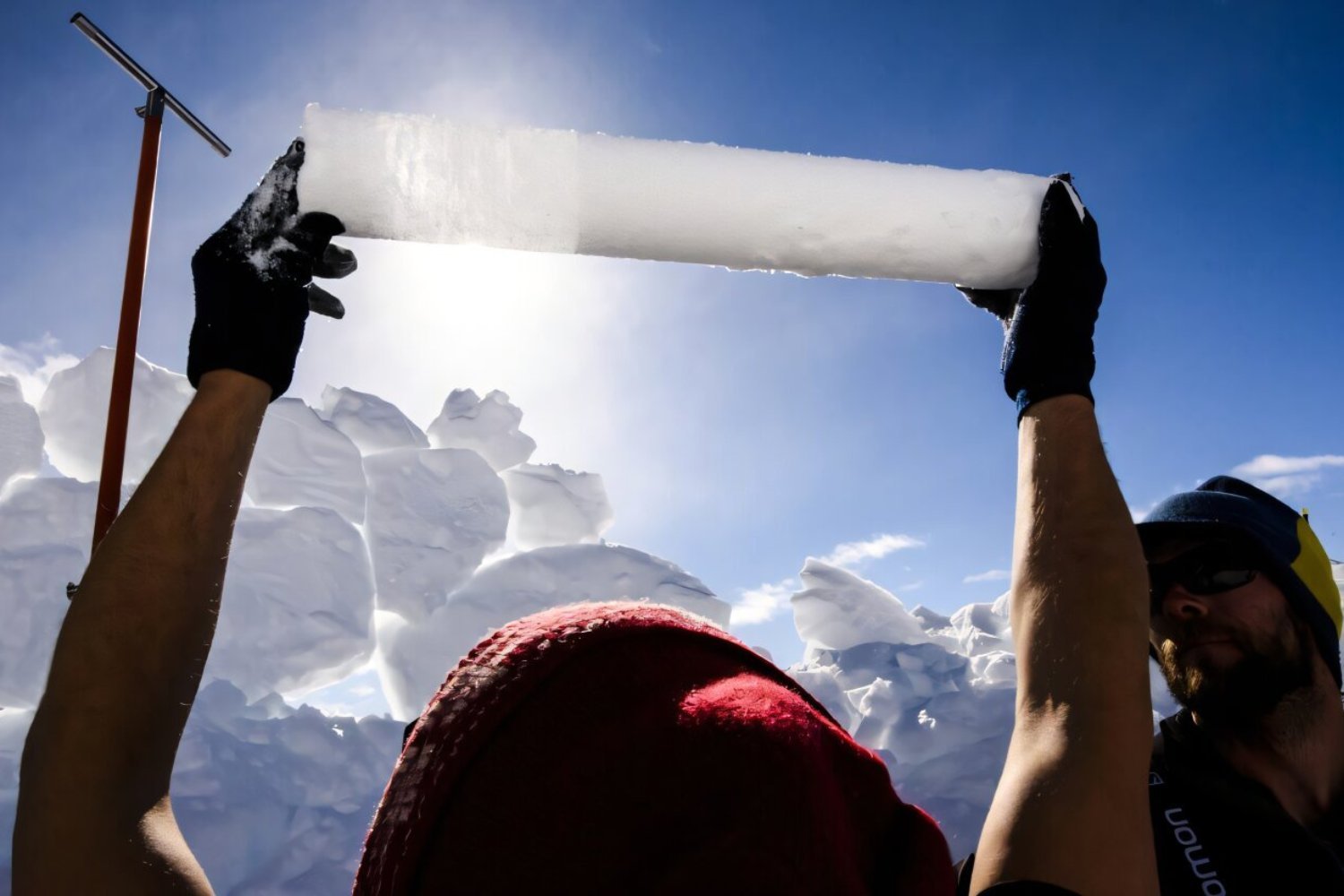Greenland’s ice sheet is the Second-largest ice cap on earthAnd because of the planet’s rising temperatures, it’s melting. Human-Induced Climate Change is intensified atmospheric rives, but new research sugges their impact on Greenland’s ice sheet is more company than online.
A research pair has been investigated the recent impact of an intemspheric river – a channel of water vapor that brings moisture and heat from warmer Oceans to Colder regions – On Greenland ‘ice Sheet. Unexpectedly, they found that this phenomenon deposited 16 billion tons of snow on greenland, enough to temporarily As detailed in a study Published March 3 in the Journal Geophysical Research Letters, Atmospheric Rivers Might have a more positive impact than researchrs had theorized.
“I was surprised by just how much snow was dumped on the ice sheet over such a short period,” Alun Hubbard, A Glaciologist at the Arctic University of TROMSH and Stoody Co-Author, SAID in an amenican Geophysical union (AGU) statement“I thought it’d be a minute Amount, but it’s a gobsmacking contribution to greenland’s annual ice mass.”
Global Warming Is Melting Greenland’s Ice Sheets at Unprecedented Rates. In 2023, The ice Sheet Lost 80 Gigatons of Water—That’s approximately 660,430 gallons (2.5 million liters) of water per second. In 2024, it shrank for the 28th year in a rowIf the entry ice sheet was to melt, the Sea Level would rain by over 23 feet (7 meters). Climate scientists predict that climate change will also also intensify atmospheric rivers, Making them Stronger and More Frequent, which group acelerate ice loss in great.
However, an atmospheric river that occurred in March 2022 Challenges this notion. At the time, lead author hannah baily, a geochemist at the university of ulu, was in svalbard. As the atmospheric river pummeled the small nowegian archipelago with intenses rain, baily wondered what it was doing 1,245 miles (2,000 kilometers) Away, in Greenland. A year later, she and hubbard traveled to southeastern greenland to investge the matter.
https://www.youtube.com/watch?v=ewzfpkzeomk
There, the two researchers collected a 49-foot (15-meter) core of firn-dense, compacted snow that gradually turns into glass. Ice cores are natural’s record keeprs, and this one documented almost 10 years of six of snow accumulation. By Comparing Complex Analyses of the Ice Core to Local Weather Data, Bailey and Hubbard identified the ice core section corresponding to the 2022 atmospheric river.
“Using High-Election Firn Core Sampling and Isotopic Analysis Allowed Us to Pinpoint the Extraordinary Snowfall from This Atmospheric River,” Bailey Explained. “It’s a rare opportunity to directly link an event to greenland ice sheet surface mass balance and dynamics.”
The ice core section revised that the atmospheric river had brought 16 billion tons of snow to greenland, single-handedly offsetting the ice sheet’s yearly ice loss by 8% in jut three days. As stated in the agu press release:
The Atmospheric River Had Had Pelted Svalbard With Rain, but 2,000 kilometers (1,245 mills) Away in Southeastern Greenland, it delivered snow – and lots of it. On March 14, 11.6 billion tons of snow fell on the ice sheet, with an additional 4.5 billion tons over the next few days. One Gigaton of Snow Roughly Equates to One Cubic Kilometer of Fresh Water, which could complete complete fill the US capitol building more than 2,200 times.
The event also covered the ice sheet with fresh, reflex snow, increasing the region’s albedo (its ability to reflex to reflect Sunlight) and Setting back seasonal ice melt by almost two whites – DESPITES 2022! Abnormally warm spring tempratures.
“Sadly, The Greenland Ice Sheet Won’T be Saved by Atmospheric Rivers,” Hubbard said. “But what we see in this new study is that, contrary to Prevailing opinions, under the right conditions, atmospheric rivers might not be all bad news.”
If Global Temperatures Continue to Rise, however, atmospheric rivers clock one day brings rain instead of snow to greenland. In Fact, Hubbard and Bailey Emphasize that more research is needed to understand bot the current and future impact of atmospheric rivers on the Northern hemisphere’s largest ice mass.
“Atmospheric rivers have a dual-edged role in shaping greenland’s-the wider arctic’s-forces,” BAILEY CONCLUDED.
